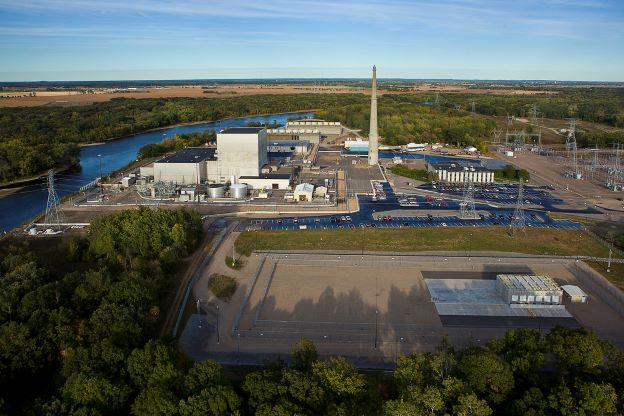
About the Monticello nuke plant
The nuclear power plant in Monticello, Minnesota, needs its license renewed. Which shouldn’t happen. Instead, the plant should be put down as soon as a crash program of solar and wind installation can provide for the needs of those currently being served by the nuke plant. But that isn’t happening.
The “promise” of nuclear power has been, and continues to be, and will always be, a mega-failure. Everyone should realize that by now, but, well, you know how many people are once their minds are made up.
And there was an extremely unfortunate sequence of recent events.
In 2018, California utility regulators approved a plan to shutter Diablo Canyon’s two nuclear reactors in 2024 and 2025. Doing so would deprive the state’s grid of 2,323 megawatts of generating capacity, but Pacific Gas & Electric, the plant’s operator, and a coalition of labor and environmental groups proposed replacing the lost power with renewables. The plant kicked out enough juice to light up about 1.7 million homes, but replacing that power seemed feasible, especially since PG&E predicted that demand would steadily decline over time, as more folks put solar on their roofs and slashed their energy consumption…
Now, however, the whole scenario has been turned on its head: Diablo Canyon’s reactors are poised to continue fissioning atoms for the foreseeable future. Contrary to PG&E’s optimistic projections, society, in general, is growing even hungrier for power…
On the demand side, however, things have gone haywire. Earlier this month, PG&E CEO Patti Poppe predicted that the utility’s load — or the amount of power consumed — would double by 2040. Poppe is not exaggerating; Texas grid operators expect demand to double there in just six years. Some of this added load was foreseeable. Human-caused climate change is increasing temperatures, transforming energy-intensive air conditioning from a luxury to a life-or-death necessity. And all those Teslas and other electric vehicles you see cruising on the highway? They need to be charged, even as more folks are switching out their dirty natural gas appliances for electric ones.
But back in 2018, few anticipated the incredibly rapid buildup of all the electricity-sucking data centers that we would need to process our credit card payments, all the computing we do, our constant Google searches and the endless movies we stream. Those demands, meanwhile, pale in comparison to the huge power consumption required to mine a single bitcoin or process a generative AI operation. And together they are threatening to overwhelm power supplies altogether, straining the grid and throwing a digital wrench into the energy transition.
(High Country News)
I’m typically online for two to three hours a day. I try to use some of that time constructively, in advocating for progressive policies, albeit in an infinitesimal way. (I figure the infinitesimals add up.) Which means, I suppose, that I’m contributing to the need for the voracious energy hog that is the internet’s infrastructure. Rather a Catch-22.
Comment from Joe Musich: Yep I cannot explain my online power consumption. I have never been able to. The discussion should still be out there about unnecessary lighting. Does street lighting as we do it really deter crime ? Is advertising at 2am really needed? There are a lot of loopholes that could be closed. Here’s a question: how did lighting standards for indoor spaces come to be ? I do know in many MPS classrooms there are fixtures for 400% more than the lighting needed to read. Little things like that add up.
Thanks for your feedback. If we like what you have to say, it may appear in a future post of reader reactions.


